Related Tags
The Collection: Dirty Hit label boss Jamie Oborne
Rather than being trapped behind glass, these vintage instruments have seen live and studio action with The 1975, Talking Heads and more.

Jamie Oborne at Dirty Hit HQ in London. All images: Eleanor Jane
Jamie Oborne is the founder and owner of Dirty Hit, the British independent record label home to some of the hottest guitar acts on the planet, including The 1975, Beabadoobee and recent Brit Award winners Wolf Alice.
Though his career as an artist manager and label chief has been immensely successful, Oborne still finds the time to indulge his passion for guitars – and many of his instruments find their way into the hands of Dirty Hit artists.
The selection of battered guitar cases that Jamie has brought to his London office today represents the tip of an enviable iceberg. “I don’t need this many guitars, obviously,” he admits. “But I do have a bit of a problem…”
Oborne cites the “animalistic” playing of The Birthday Party’s Roland S. Howard as a pivotal early influence, and he even attempted to buy Howard’s iconic Jaguar after the Australian guitarist passed away. It’s perhaps no surprise, then, that offsets are something of a theme in Oborne’s collection – as are Fenders in general.
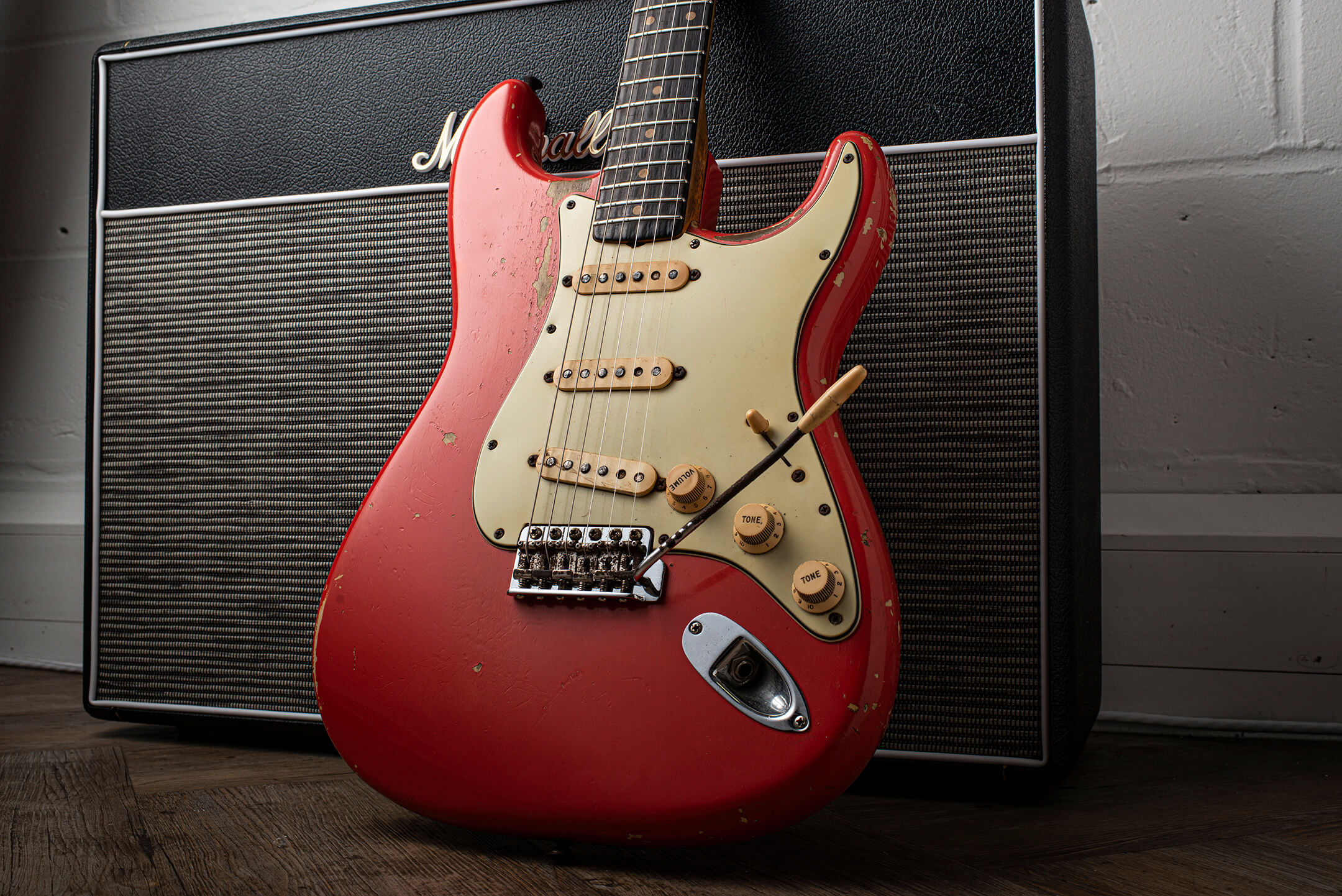
The first instrument he pulls out for our perusal is a Fiesta Red 1962 Stratocaster with no shortage of playwear. This stellar six-string is already Instagram famous; True Vintage Guitar’s John Shults bagged it on a recent guitar safari in the UK and sold it to Oborne before flying back to Alabama.
“I wanted a great custom-colour Strat,” says Jamie. “What I had my heart set on really was either Olympic White or a Foam Green one. But I can’t afford a Foam Green one and I haven’t seen an Olympic White one I like. John knew that I wanted a really nice Strat as I’d bought another beat-up Strat from him. But this one sounds amazing – the neck pickup is so potent.
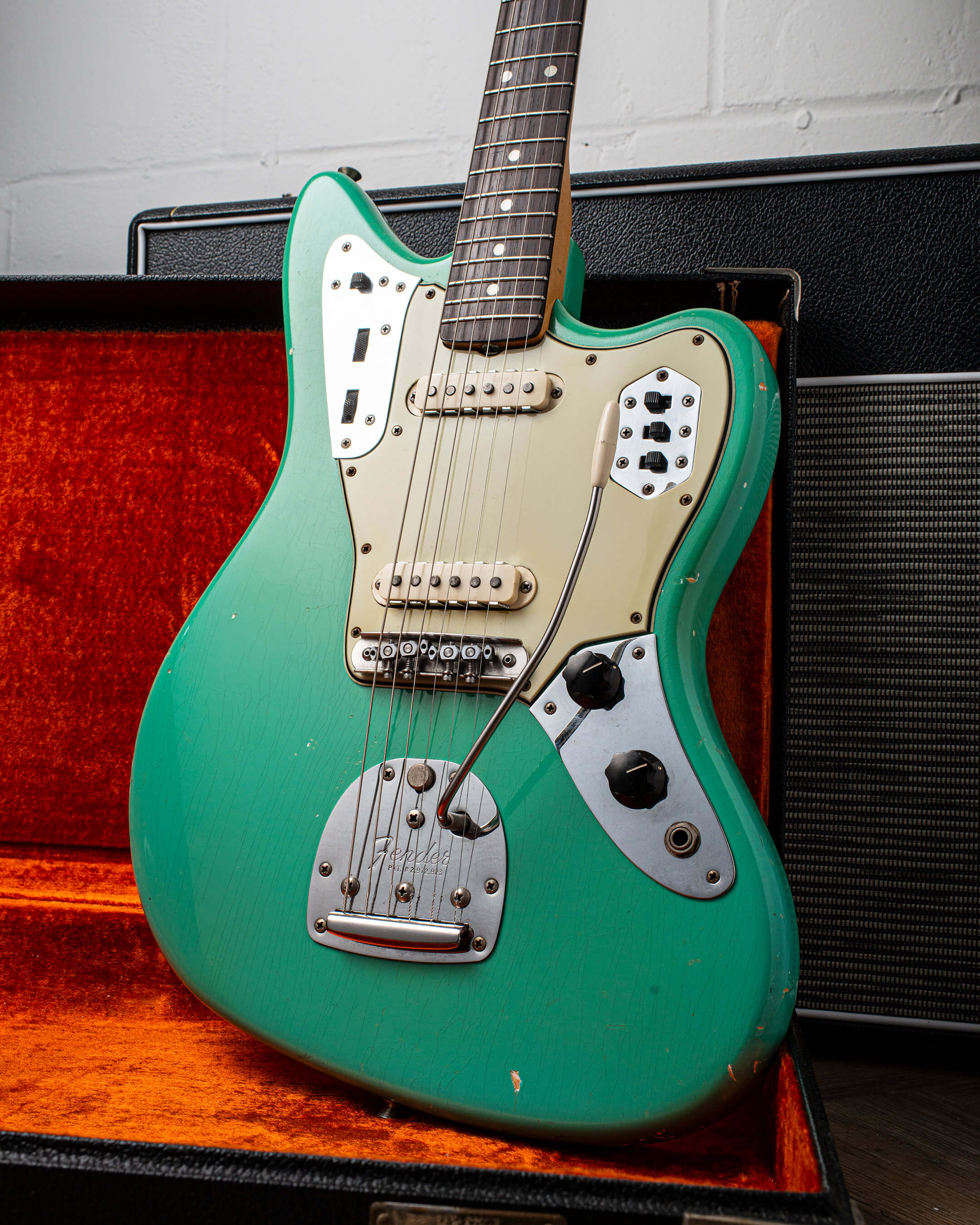
“It’s a really good one – you know how they can sometimes be really percussive? It definitely has that sort of vibe. It’s a wicked guitar. I’m really pleased with it.”
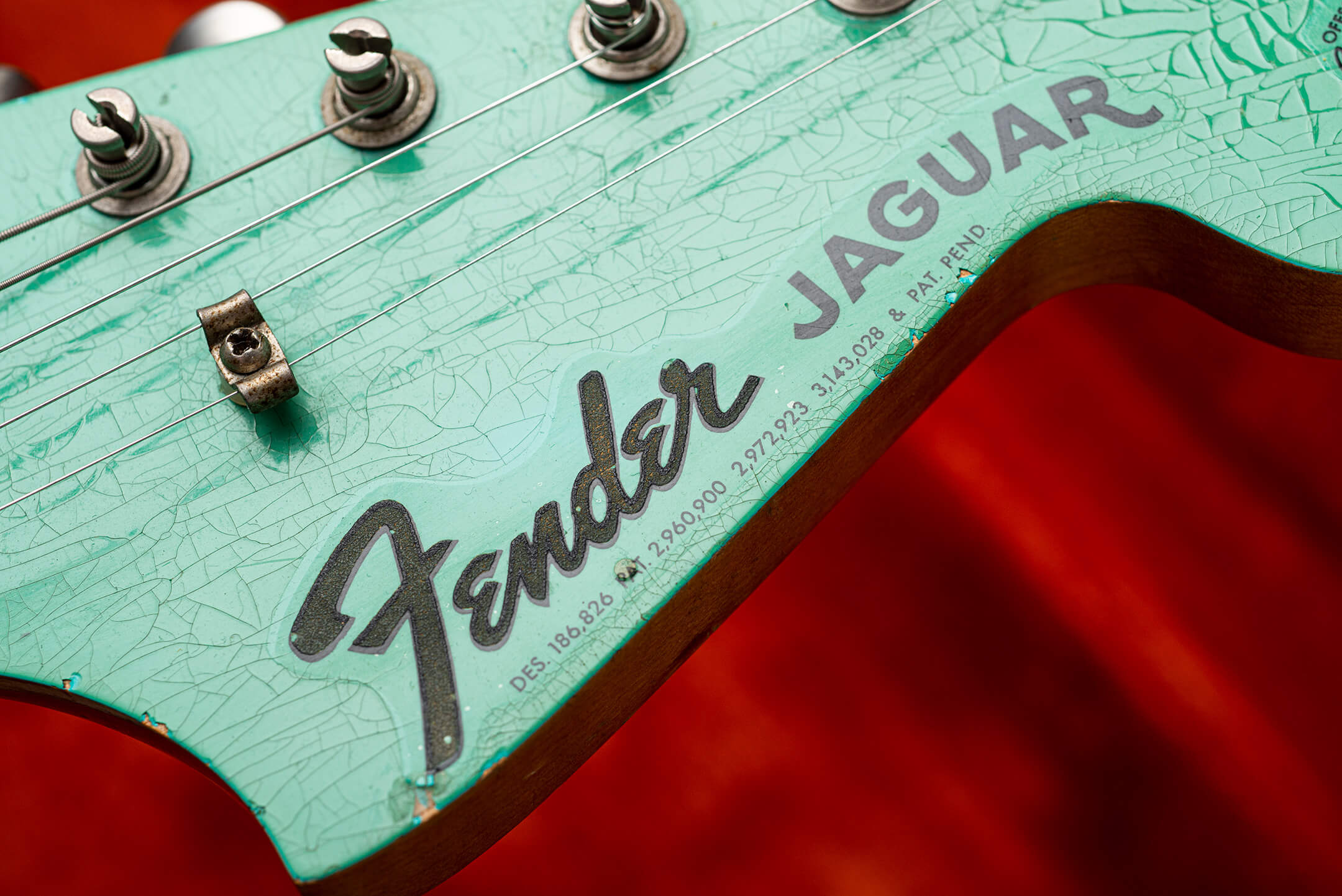
Green machine
On the subject of Foam Green, arguably the most head-turning guitar in the room is Oborne’s 1964 Foam Green Jaguar. Custom-colour Fenders don’t come much cooler than this – but tracking it down involved a protracted search.
“I became obsessed with getting a Foam Green Jag,” Jamie admits. “I would spend literally hours and hours on the hunt for one, trawling the internet and searching weird stuff. One day I came across a website for a session guitarist called Robby Z, and there were pictures of him playing a Foam Green Jazzmaster and Jaguar.
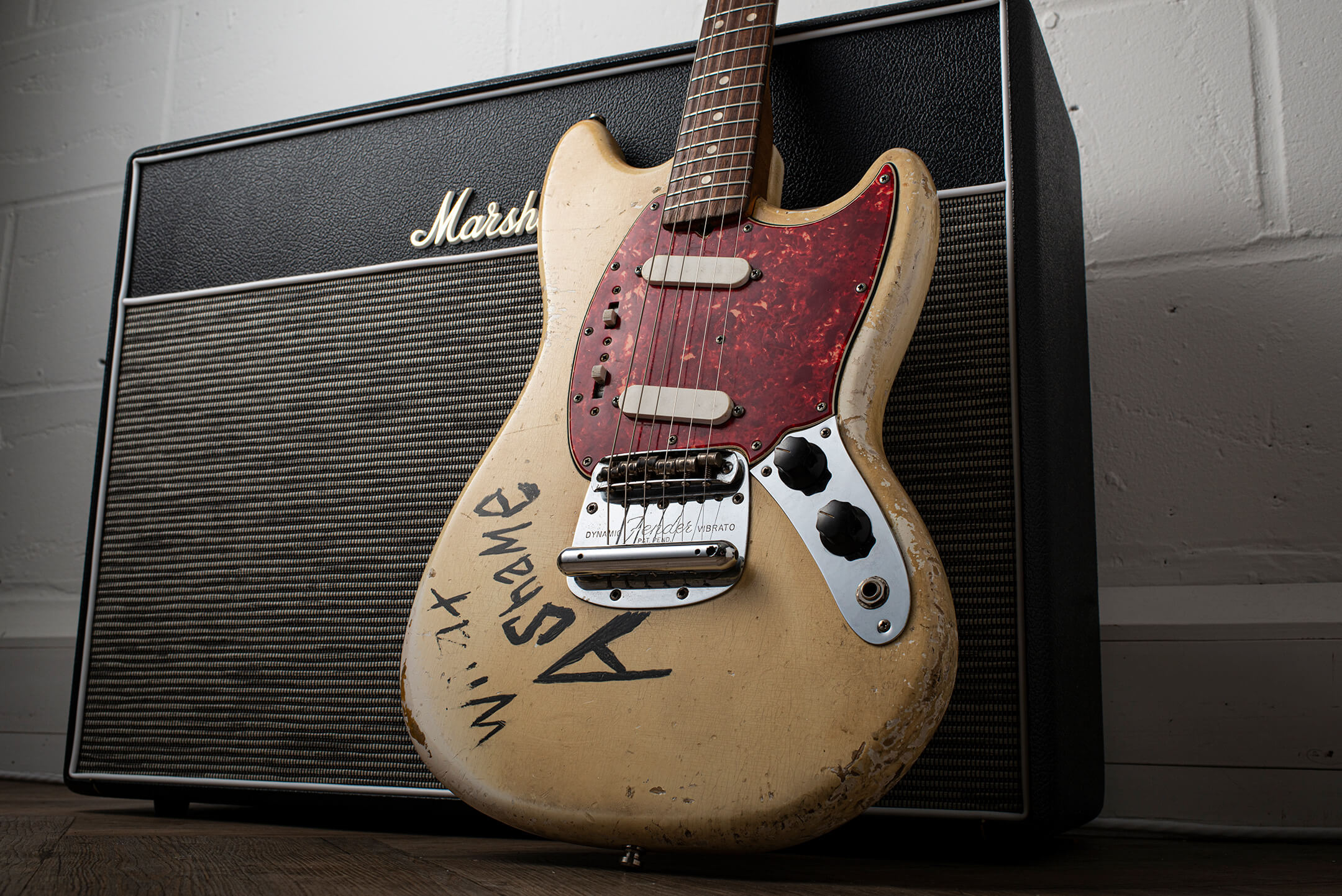
“I emailed him and he said they weren’t for sale. We started talking about guitars and he became quite interested in my label and what I was doing with artists. I met him in LA once and we kind of became friends, actually.
“He had hundreds of offsets, every colour you could think of, every year, every configuration. We sort of joked that when I made enough money I’d buy his entire collection off him and open a guitar shop in Malibu. We eventually agreed that he would sell me the Jaguar – this was maybe 11 years ago. Unfortunately, in 2021 someone robbed his storage unit and everything was gone. So far, he’s got 12 or 13 of them back.”

The Foam Green Jaguar has featured on recordings by numerous bands from the Dirty Hit stable. The 1975’s Adam Hann even used it as his main touring guitar for a couple of years. “It’s a great-sounding instrument,” says Oborne. “It’s much punchier than your average Jaguar.”
Any wrench that Hann may have felt when returning the Foam Green Jaguar was surely mitigated when Oborne gifted the lead guitarist a vintage Olympic White example. “I actually bought him that when they had their first number one album,” says Jamie. “It came from Fretted Americana.”
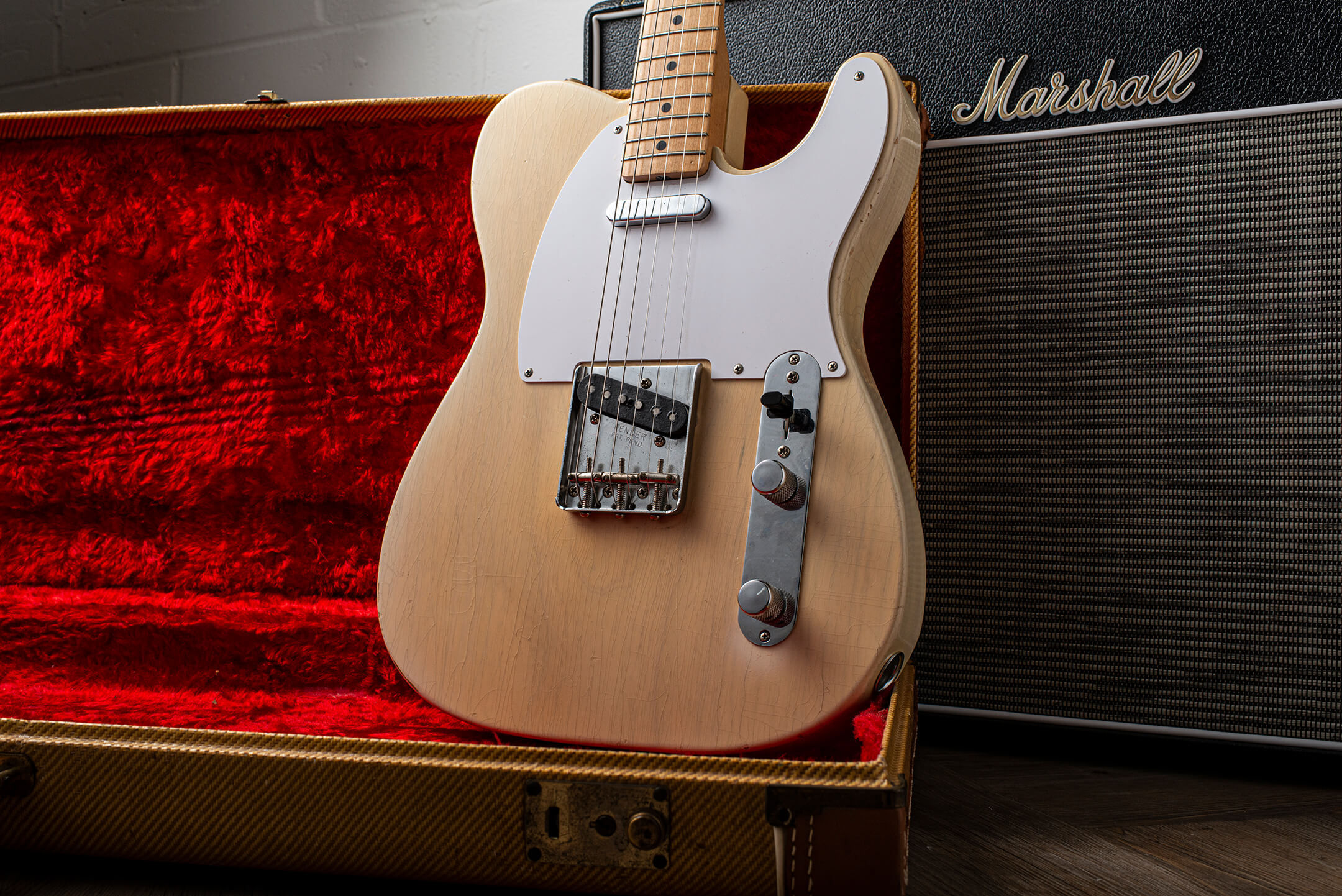
Star guitar
Next, Oborne pulls out another guitar intimately connected to The 1975, in particular their frontman Matthew Healy. “In the lead-up to them getting signed by me, they got rejected by literally every label on the planet,” Jamie remembers. “I was going to LA on business, and Matthew was really depressed because everyone had been telling him he wasn’t good enough.
“He was so down. I was like, ‘Come with me to LA, have a change of scene and see how you feel when you get back.’ So we went to LA, I took him to Norman’s Rare Guitars and I bought him this.”

Healy has previously stated that the 1965 Fender Mustang changed his life. “He used it exclusively on tour for the first two albums,” says Jamie. “He only stopped touring it when he realised it had become so synonymous with him. He couldn’t bear the thought of it getting lost or something.”
Although the guitar is now somewhat battle-scarred and has been decorated with the words ‘what a shame’ (an in-joke which appears frequently in The 1975’s lyrics), Oborne says the Mustang was “pretty mint” when it was purchased. “Now it’s absolutely fucked,” Jamie laughs. “When he retired it, he gave it to me, and it’s been in my office ever since. It’s one of my favourites. I’m slightly embarrassed by how many Mustangs I own, actually, but they’re sick!”
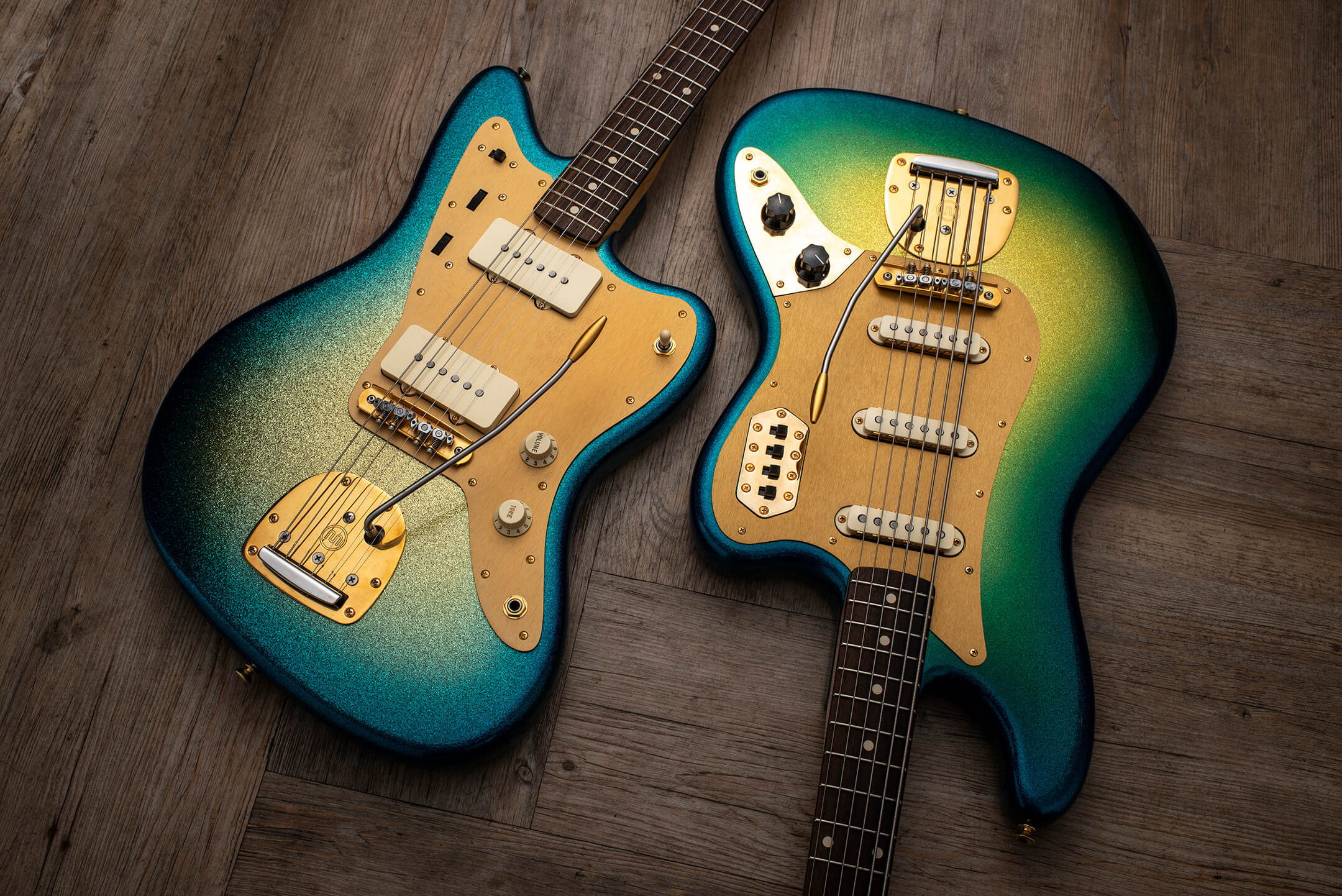
Bought to inspire
As a manager and label boss, Jamie Oborne is not only mindful of his artists’ mental health – he also gives them access to storied and vibey instruments in the hope of providing songwriting inspiration. Indeed, guitars that were used to make history at the epicentre of the New York scene in the 1970s are now appearing on hit records on this side of the pond.
“That guitar belonged to the producer Craig Leon,” Jamie tells us, pointing at a sunburst 1963 Jazzmaster. “His first gig as a producer was as the in-house engineer for Sire Records, who most famously had the Ramones and Talking Heads. When he was recording Talking Heads, David Byrne didn’t have a decent guitar, so David Byrne used that. And on the Ramones’ first album, all the really trebly bursts of noise were that guitar.
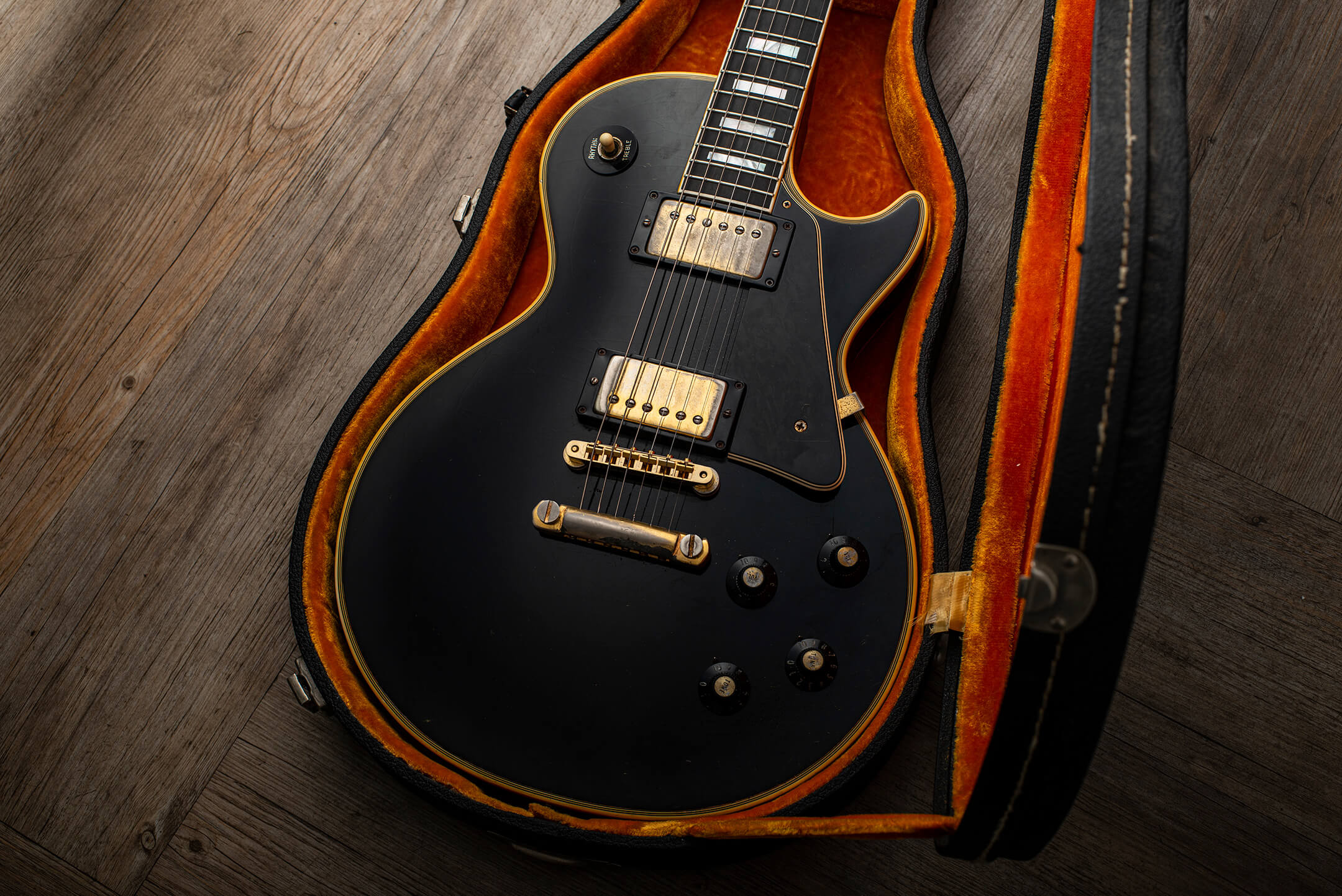
“According to Craig, there were only two guitars used on any record he produced. There’s either that Jazzmaster or his 330, which is now my 330, but Matthew Healey has it. The 330 originally used to belong to the guitarist in The 13th Floor Elevators. But that Jazzmaster… all of the artists who’ve been in our studio think it’s the best guitar.”
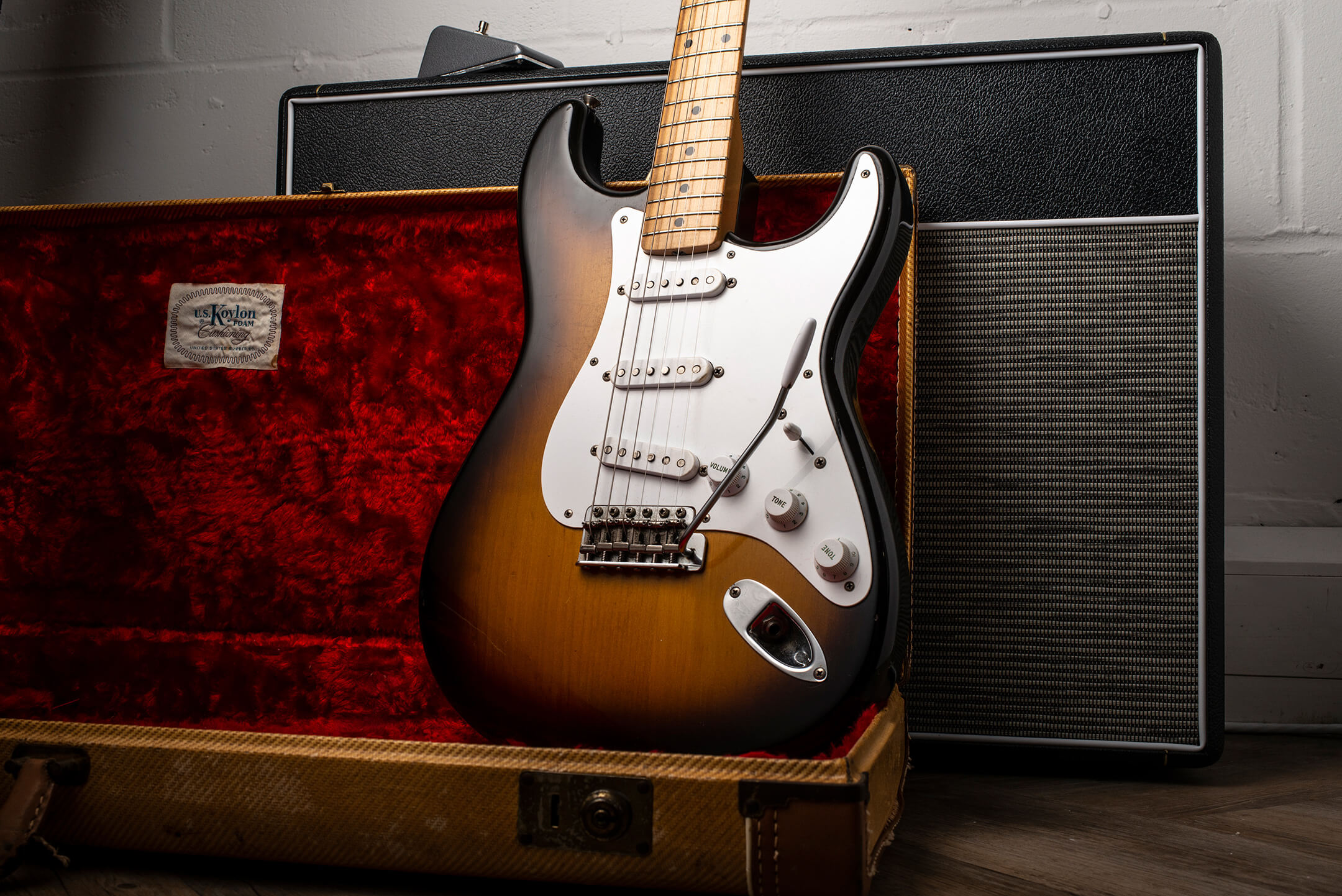
Friends eclectic
Oborne describes Dirty Hit’s in-house studio as “rough and ready but really well equipped”, with a smorgasbord of vintage keyboards, amplifiers, effects pedals and more besides. As for the guitars? Well, they just keep coming.
Jamie’s matching Fender Custom Shop Bass VI and Jazzmaster were inspired by a teenage encounter with a very beaten-up vintage Surf Burst Jazzmaster glimpsed through the window of Andy’s Guitars – and the haze of an acid trip – on Denmark Street in 1988. With dance and rock music coalescing and offset guitars everywhere in the indie scene, the spirit of the late 1980s would prove to be a huge formative influence both on Jamie’s taste in music and his taste in guitars.

“At the time I was really starting to fall in love with this notion of rock ’n’ roll and pop culture, and I was discovering loads of music,” he recalls. “It was such a rich time in culture because grunge was just about to break, and there was the birth of rave culture. I’d also just discovered this band called The Stone Roses, who became way more important to me than the American grunge bands, I guess because I was living in England and that was real counterculture at the time. It was kind of a mad time.”
Here in 2022, the pop landscape is no less eclectic but it’s easier than ever before to make professional-quality recordings without even entering a traditional studio. We wonder if Jamie still encourages his artists to get in a room together and turn up loud, or if remote recording with plugins has become the new normal.

“Obviously it depends what sort of record you are making but I think it seems like common sense that one should be using the best equipment from all eras,” he asserts. “Of course we use a lot of digital technology but plugins aren’t the same as the sound of air moving, or a properly maintained Hammond or a Plexiglas Marshall.
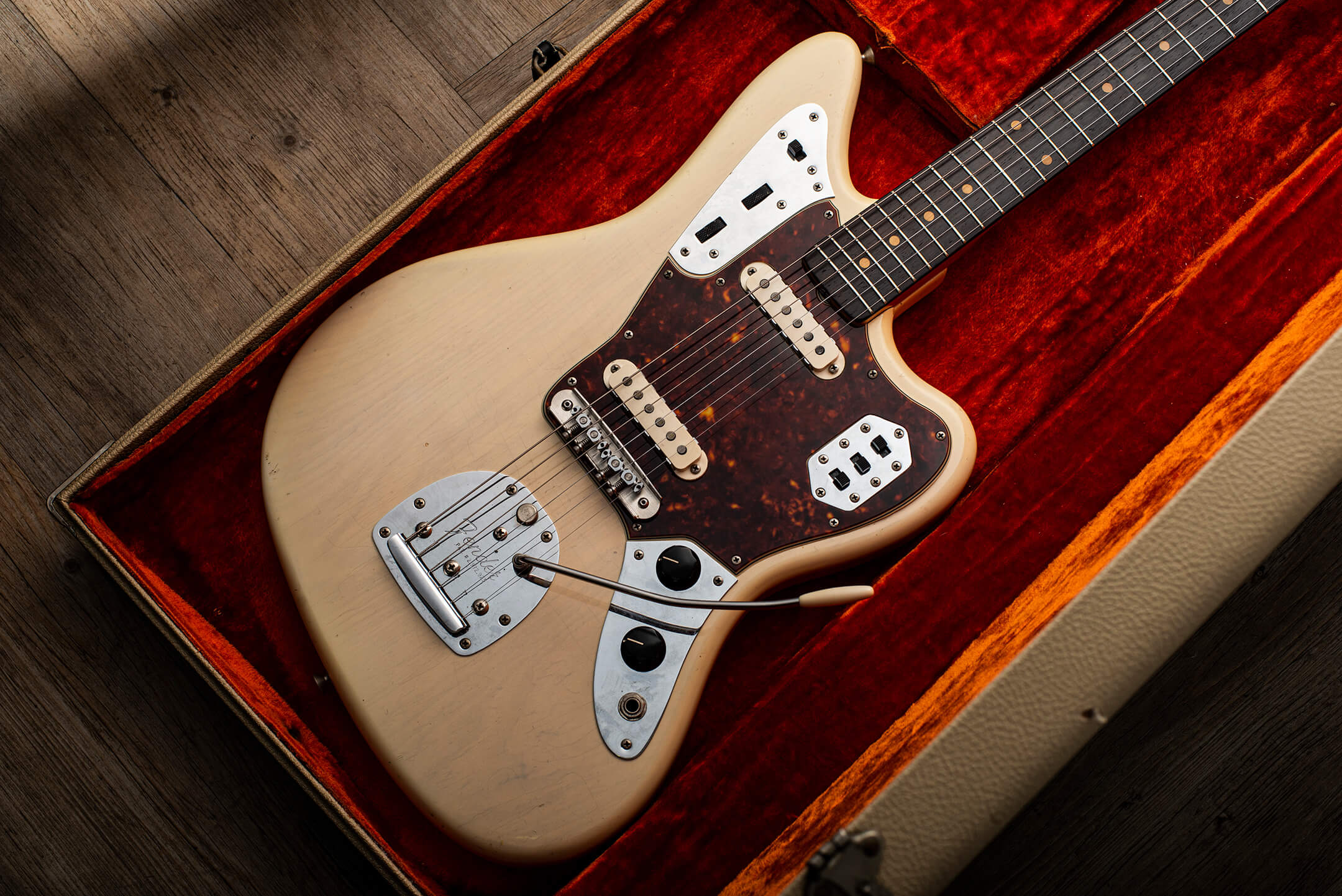
“Even when I plugged in that Les Paul for the first time, I was amazed by the harmonic richness of it. I don’t know if you can really replicate that stuff. We’ve used Kemper amps and they serve a purpose, but they’re not as musical. I like the mythology of stuff, you know? I like that smashed up Strat, I like owning an amp that might have belonged to Jimmy Page… there’s a magic to those things, isn’t there?”
Above all, Oborne believes that a balance of modern technology and classic equipment is the key. “I think The 1975 are a good example of that,” he says. “They are real gearheads, and they don’t care whether it’s cutting-edge tech or vintage… they just want to feel the soul in stuff.”
Follow @jamieoborne on Instagram for more.
